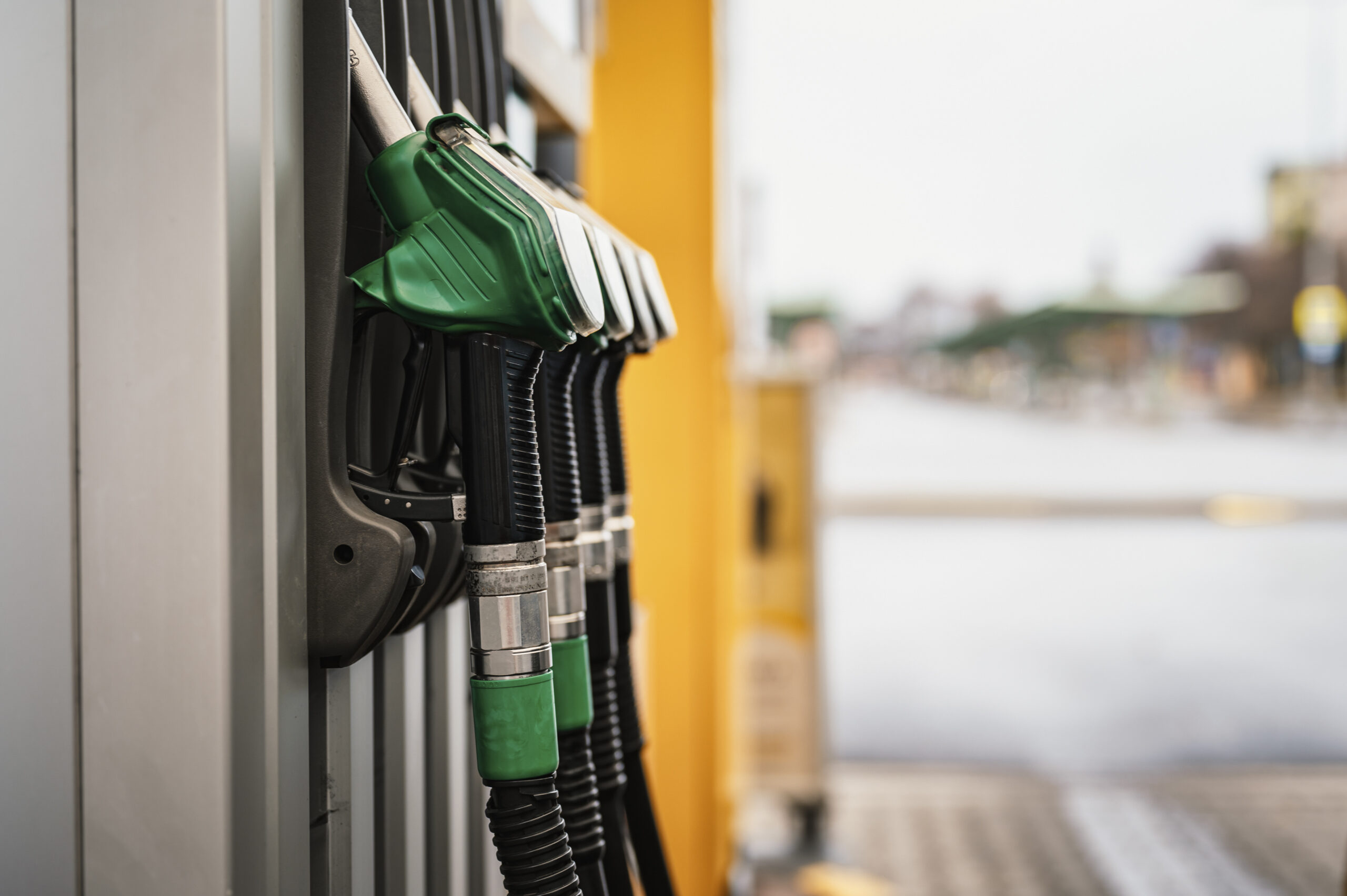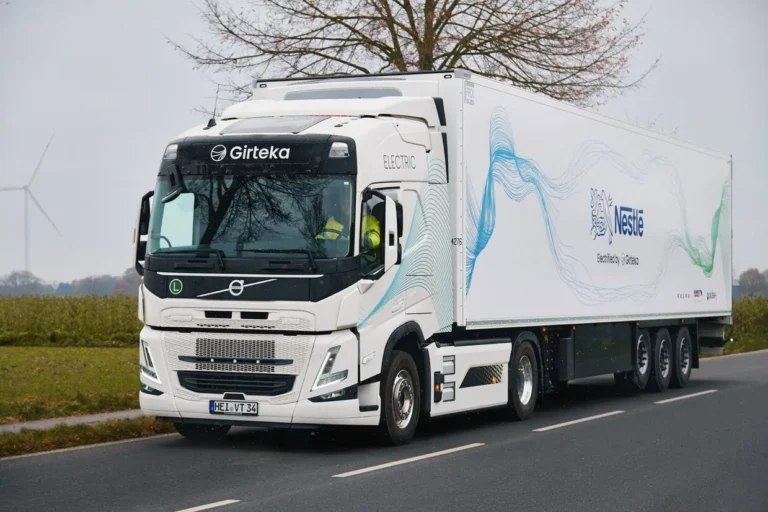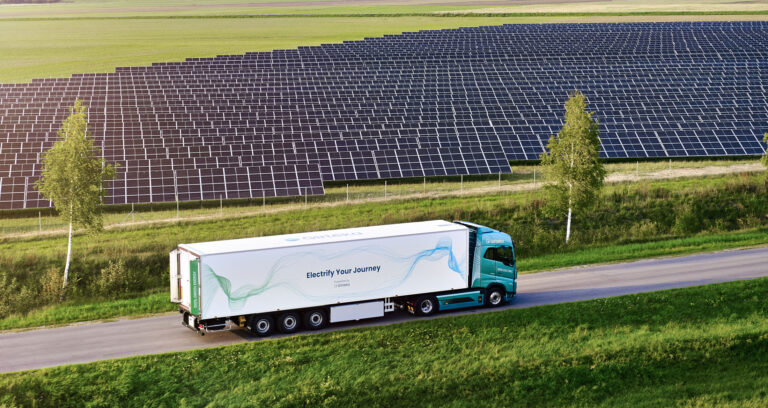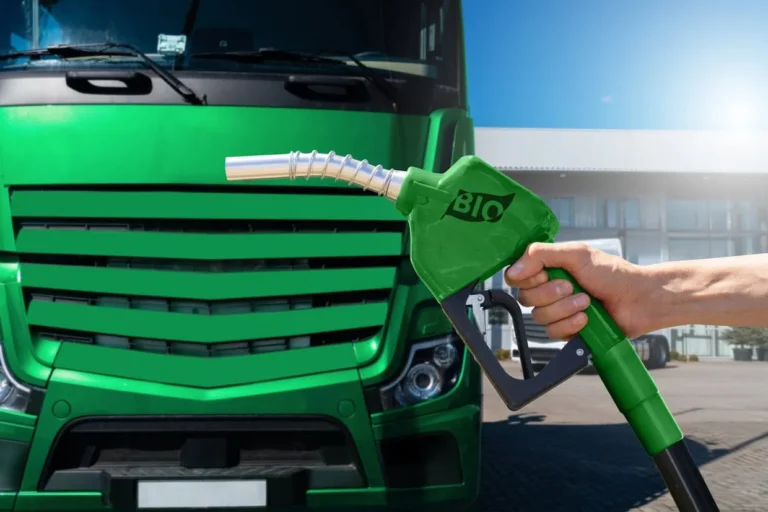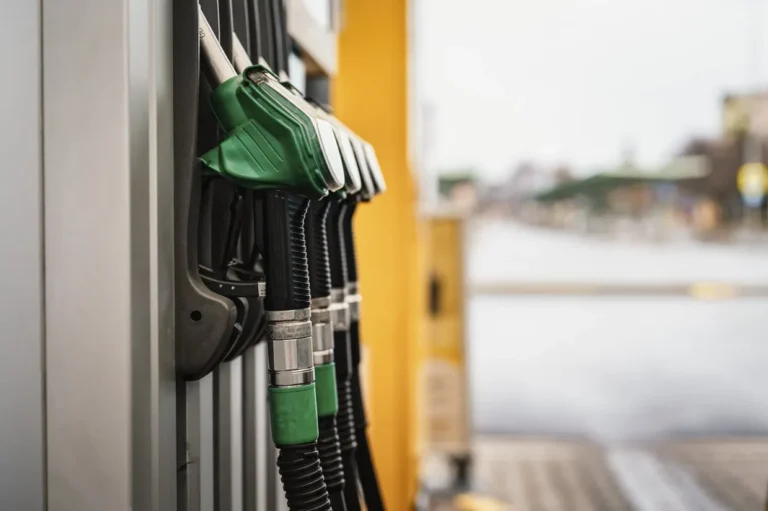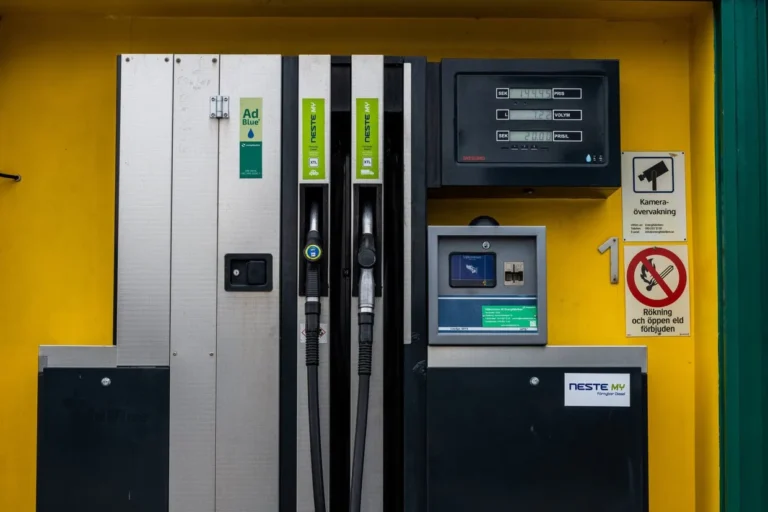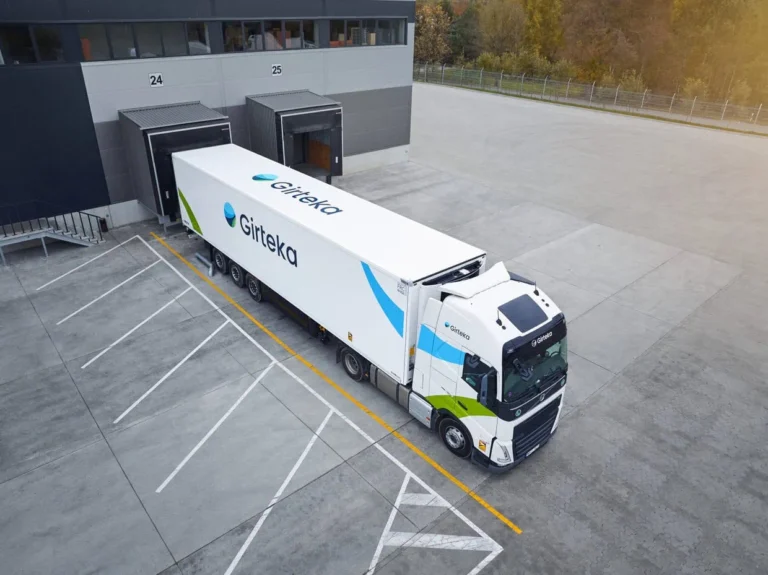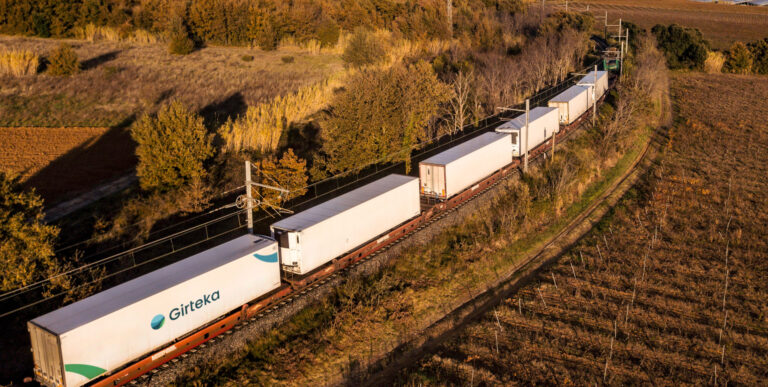Much like transportation companies, fuel manufacturers share the same goals: to decarbonize their processes and products and meet the goal of becoming a net-zero business by 2050. That sends a positive message to logistics providers, such as Girteka, which has ambitious plans to reduce its emissions. Without alternative fuels, there are just a few ways for companies to reduce their environmental impact in the short-term. Still, the sector continues exploring alternatives to the staple that diesel fuel has become for the trucking industry, with renewable diesel (HVO) and LNG/bioLNG becoming the front-runners as a short-term and, potentially, long-term future solution.
Renewable diesel, also known as HVO or Hydroprocessed Esters and Fatty Acids (HEFA), is just one of the alternatives that have helped to reduce emissions of carrying goods on the road. Many other options are already offered to the market, including LNG and bioLNG, electric and hydrogen-powered propulsion for trucks, which share or have their unique set of challenges. Those include range, charging/refilling infrastructure, technology adoption, and production capacity from manufacturers.
Nevertheless, what alternative fuels such as renewable diesel, LNG and bioLNG offer is a drop-in solution that can significantly help in reducing the environmental impact road freight transportation can have while delivering goods immediately, without hampering supply chains’ integrity, like the need to look for special charging stations while on the road. But there are challenges related to alternative fuels, which have been widely discussed within the road freight transport industry.
So, how do fuel manufacturers see the current state and the short- and long-term future of alternative fuels?
Separate Businesses and Brands
For example, Shell, an international energy company headquartered in London, United Kingdom (UK), has a business focused on the advancement, production and supply of sustainable bio and e-fuels, namely Shell Low Carbon Fuels. Shell’s target is to become a net-zero emissions energy business by 2050.
By offering transportation providers a broad choice of low-carbon solutions (including biofuels, EV and hydrogen), they aim to help their customers reduce emissions and transition to net-zero businesses, as well as support energy security during this transition.
In its Energy Transition Progress Report 2022, Shell highlighted that it is one of the largest traders and blenders of biofuels, with around 9.5 billion liters of biofuels going into Shell’s fuels worldwide. That is already around 6% of total biofuel consumption globally, with the company growing its production levels in various ways.
In 2022, it acquired Nature Energy, expanding its manufacturing footprint with 14 biogas plants, with the company planning 30 new plants in Europe and the United States (US). While in Brazil, through its Raizen joint venture, Shell agreed to purchase 3.25 billion liters of ethanol made from sugar-cane waste – it is expected to be produced by five plants that Raízen plans to build in Brazil, bringing its total portfolio of cellulosic ethanol facilities to nine.
The report was published in March 2023. So the strategy here is clear, to expand and develop other alternatives, as Shell already markets a number of biofuel products to the road transportation sector across different countries including Shell Renewable Diesel, Shell BioLNG and Shell R-CNG (Renewable Compressed Natural Gas).
Similarly, Neste has its MY Renewable Diesel brand for HVO, which according to the company, is “made from 100% sustainably sourced renewable raw materials such as used cooking oil and animal fat from food industry waste and results in as much as 75-95%* less greenhouse gas (GHG) emissions over the fuel’s life cycle when compared with fossil diesel”.
Accordingly, Neste’s MY Renewable Diesel is “a drop-in fuel” that can be used without any modifications, as well as blended at any ratio. “It is fully compatible with all diesel engines and current diesel fuel distribution infrastructure – from refinery to fueling service stations and end-users,” Neste noted on its informational page about the alternative fuel.
Chevron Renewable Energy Group is another example, with the US-based Chevron, one of the largest oil companies in the world, highlighting its sustainability-related work with a separate brand. Currently, Chevron Renewable Energy Group has two biodiesel production facilities in Europe, namely in Oeding and Emden, Germany. The ground at the latter was broken in October 2022, with the project set to be finished by the end of 2023.
While there could be a plethora of reasons why oil producers spin off their sustainability efforts under separate brands, the matter of fact is that they are responding to the new rules of the game. Those rules are handed over by consumers and governments, the latter of which have a set goal: to meet the long-term temperature goal of the Paris Agreement under the United Nations (UN).
Alternative Fuel Challenges
But while the production of alternative fuels continued to grow in the world, challenges have remained to the uptake of biofuels. Globally, according to a report compiled by Visiongain, the global market of alternative fuels was valued at $116.4 billion (€106.8 billion), with the market set to have a Compound Annual Growth Rate (CAGR) of 7.9%.
“The expansion of biofuel production infrastructure is a critical factor in the growth and development of the biofuel industry,” the report noted, adding that infrastructure to also distribute and store those fuels has grown over the years with the ever-growing production levels.
According to another report by the International Energy Agency (IEA), the forecasted new demand for biofuels will grow by 11% to 1800 million liters in 2024. However, in advanced economies, “new policies are not likely to influence production until after 2024, and high prices, feedstock concerns, and technical constraints limit additional growth beyond our 2021 forecast,” continued the IEA.
Nevertheless, oil companies have continued to expand the production of alternative fuels globally and in Europe. Chevron’s site in Emden, Germany, will produce up to 27 million gallons (102.2 million liters) of biodiesel annually, while Neste produced 1.65 billion tons of renewable diesel in H1 2023 (H1 2022: 1.63 tons).
Overall, according to the EurObserv’ER’s latest barometer, measuring progress made by renewable energy in the European Union (EU), biofuel consumption increased by 7.8% between 2020 and 2021. EurObserver’ER defines biofuels as “bio-diesel, bioethanol, and biogas for transport in the biofuels technologies”. But the barometer, published in February 2023, also pointed out that “substantial biofuel production capacities remain idle in the EU”.
The reasons for that could vary, with feedstock pricing affecting the potential turnover for oil producers, as well as 2021 still being a pandemic year with uneven demand throughout the period. But the fact remains that alternative fuels remain an expensive substitute for traditional fossil fuels.
According to the IEA, the average price of fossil-fuel-based jet fuel, used in aviation, was between $0.29 (€0.27) and $0.5 (€0.46) per liter, with HEFA-based alternatives being priced between $0.85 (€0.78) and $1.50 (€1.38) per liter in 2019 and 2020. HVO is expectedly between 10% and 15% pricier compared to its diesel alternative, as noted by HVO Fuel UK.
Since companies are still looking for alternatives on how to efficiently produce sustainable fuels, the investment costs remain high to either develop or grow the scale of certain production methods. As such, reducing the risks and commercializing various technologies into market-ready solutions face large capital and time requirements.
Lawmakers’ Role
Barring road freight transportation companies and fuel producers, governments across the globe also have an interest in helping the advancements of alternatives for Internal Combustion Engines (ICE). The majority of governments around the globe signed the legally binding Paris Agreement, aiming to reduce emissions and reverse the course of an ever-warming planet Earth.
The EU has its Renewable Energy Directive (RED), which outlined that the bloc has to use a minimum of 42.5% of renewables by 2030. The minimum binding target was increased in March 2023, when the European Parliament (EP) and the Council agreed to reinforce RED.
“The agreement also reinforces the regulatory framework for renewable energy use in transport (14.5% greenhouse gas intensity reduction or 29% share of renewable energy in final energy consumption), including a combined sub-target of 5.5% for advanced biofuels and renewable fuels of non-biological origin, including a minimum level of 1% for renewable fuels of non-biological origin,” read the European Commission’s (EC) announcement.
In June 2023, the EC published the news that it has adopted new rules on how to calculate how biofuels and biogas contribute to the renewable energy target. The final agreement on the latest RED was also reached during the same month.
The European Biodiesel Board (EBB) signed a manifesto in April 2023, whose main idea is that the decarbonization of heavy-duty vehicles should be driven by higher biodiesel blends, emphasizing “the need to decarbonize the existing HDV fleet in the most cost-effective way, and highlights the potential of all green fuels to achieve this goal”.
While the organization represents certain interests, considering the current state of hydrogen and electric trucks, it might have a point: decarbonization needs to be sped up with mandates for a larger percentage of biofuel blends in diesel, while still keeping the current status quo of the diesel engine at least for the foreseeable future.
But lawmakers have also to address certain concerns. “There are, however, growing concerns about how increased biofuels production can assert upward pressure on food prices, increase GHG emissions, and exacerbate degradation of land, forests, and water sources,” a study, called Governing Biofuels and published in the Journal of Environmental Law, read. “The production and consumption of biofuels is therefore one of the key environmental and sustainability concerns of the day and there is a widely perceived need for the regulation of biofuels to take into account these concerns,” the study continued.
Long-Term Future of HVO
But will HVO have a long-term future? After all, there are other technologies coming, with the frontrunners being hydrogen and electric trucks. Both of these offer something that HVO ultimately will be unable to do: the reduction of GHG to 0%. But at the same time, the temptations of a drop-in solution can be difficult to resist, especially considering the vast number of trucks that will have to be eventually replaced with zero-emission transportation.
As such, according to TotalEnergies, the French oil company, under the rupture scenario, where the objectives of the Paris Agreement are to be reached by 2050, global energy demand in transport will be a mix of everything. That includes electricity, hydrogen, natural gas, e-fuels, and biofuels, as well as fossil fuels. Meanwhile, the IEA predicted in 2011 that the share of biofuels would grow from 2% at the time to 27% by 2050.
In a more recent prediction, the IEA pointed out that “a significant increase in biofuel production is needed to get on track with the Net Zero Emissions by 2050 (NZE) Scenario and deliver the associated emission reductions”.
“Biofuel production reaches over 10 EJ by 2030 in the NZE Scenario, requiring an average growth of around 11% per year,” it continued, adding that more advanced feedstock usage is needed, which would increase the share of waste and non-food energy-resourced biofuel from 9% in 2021 to 40% by 2030. A study, published in the Renewable and Sustainable Energy Reviews in April 2021, concluded that in the MAIN Scenario, which represents the averages from all literature that studies the future of alternative fuels, “biofuels and advanced biofuels together are expected to contribute to more than 17% by 2050”. Furthermore, fossil fuels will remain relevant in the long-term future, “representing 51% of the fuel mix” by 2050.
It remains to be seen how much emphasis and most importantly, investment, stakeholders will dedicate to the development of alternative fuels. The decision to do so will, again, depend on many factors, including the development of gas-based propulsion as an alternative to diesel, as well as the emphasis that will be put on electric and hydrogen transportation in the medium and long-term future.
